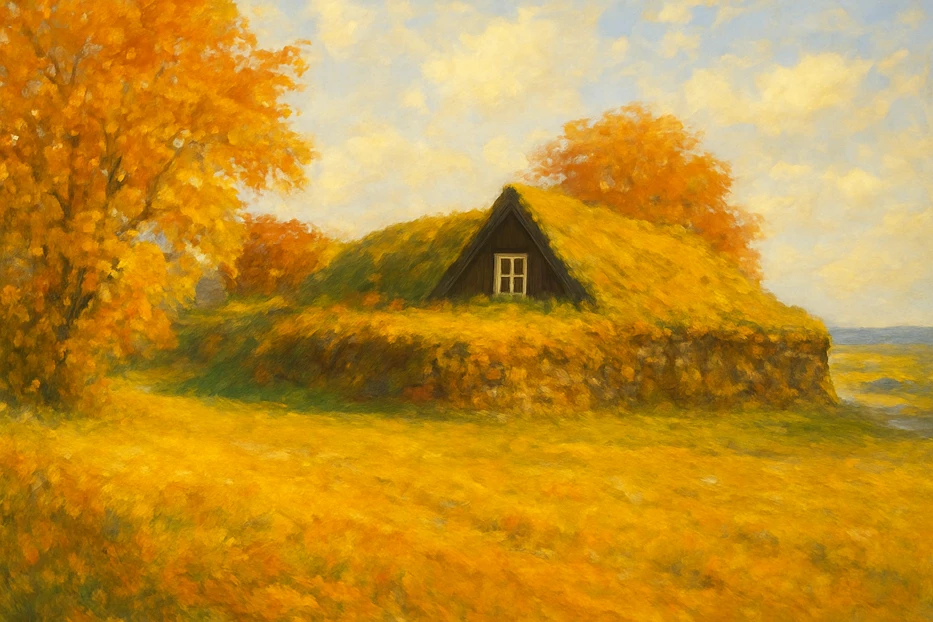Iceland, often compared to Ireland for its rugged landscapes and deep-rooted folklore, has a history filled with dramatic events, resilient figures, and unique cultural developments.
Here are ten of the most intriguing historical facts about this island nation, covering everything from its early settlement to modern geopolitical influence.
Table of Contents
The Settlement of Iceland Began with Exiles
Iceland’s first permanent settlers were Norsemen fleeing the rule of King Harald Fairhair of Norway in the late 9th century.
These settlers, mostly farmers and warriors, sought refuge in the island’s uninhabited lands to escape centralized monarchy and establish their own independent communities.
The settlement era, known as the Landnámstíð, is extensively recorded in medieval Icelandic sagas.
The World’s Oldest Parliament Was Established in 930 AD
The Alþingi (Althing), founded in 930 AD, is recognized as one of the world’s oldest continuous parliaments.
Held at Þingvellir, a natural assembly site, this early legislative body was where Icelandic chieftains and free men gathered annually to resolve disputes, pass laws, and maintain social order.
Though disrupted by foreign rule, the Alþingi was revived in the 19th century and continues to function as Iceland’s national parliament today.
Iceland’s Conversion to Christianity Was Decided at a National Assembly
Unlike other European nations, Iceland’s shift from Norse paganism to Christianity in the year 1000 was a peaceful, strategic decision made at the Alþingi.
The chieftain and lawspeaker Þorgeir Ljósvetningagoði ruled that Iceland should officially adopt Christianity while allowing private pagan worship to continue.
This diplomatic compromise helped prevent internal strife.
The Icelandic Sagas Are an Unparalleled Literary Treasure
Written primarily in the 13th century, the Icelandic sagas are historical narratives that chronicle the lives, feuds, and journeys of Iceland’s early inhabitants.
Masterpieces like Egil’s Saga and Njál’s Saga provide a blend of history, legend, and insight into medieval Scandinavian culture.
These sagas remain an essential part of Icelandic identity and are studied worldwide.
Iceland Came Under Norwegian and Later Danish Rule
After centuries of self-governance, Iceland fell under Norwegian control in 1262 with the signing of the Old Covenant (Gamli sáttmáli).
When Norway united with Denmark in the late 14th century, Iceland became part of the Danish realm, leading to a prolonged period of economic hardship and limited autonomy.
This foreign rule persisted until Iceland’s gradual push for independence in the 19th and 20th centuries.
“The 1783 Laki Eruption’s Northern Hemisphere Impact
The Laki eruption of 1783–1784 was one of the most devastating volcanic events in Icelandic history, releasing vast amounts of sulfur dioxide and causing widespread famine and disease in Iceland.
The resulting atmospheric effects led to cooler temperatures and poor harvests across Europe. In the United States, records noted a cooler winter in 1783–1784; Benjamin Franklin reported unusual haze and cold weather, possibly linked to aerosols from the Laki eruption.
Iceland Officially Became an Independent Republic in 1944
After centuries under foreign rule, Iceland formally severed its last ties with Denmark on June 17, 1944, declaring itself an independent republic.
This move was largely uncontested due to Denmark’s occupation by Nazi Germany during World War II.
The first president, Sveinn Björnsson, was elected by the Icelandic parliament, marking a new era of self-rule.
The Cod Wars Defined Iceland’s Maritime Boundaries
Between the 1950s and 1970s, Iceland gradually expanded its fishing limits — first to 4, then 12, 50, and eventually 200 nautical miles — to protect its vital fishing grounds.
This series of extensions led to the so-called “Cod Wars” with the United Kingdom. By 1976, diplomatic agreements recognized Iceland’s 200-mile exclusive fishing zone, a major victory for Icelandic sovereignty and marine conservation.
ICELAND FERRY TICKETS
Iceland Was the First Country to Recognize Lithuania’s Independence
In 1991, after Lithuania took a decisive step in dismantling the Soviet Union by declaring its independence, Iceland became the first country to officially recognize Lithuania’s sovereignty. Not the United States, not the United Kingdom, not Germany. Respect, Iceland!
Lithuania’s bold move faced strong resistance from the USSR, but Iceland’s early recognition played a symbolic role in encouraging other nations to follow suit, aiding Lithuania’s full reintegration into the global community.
Iceland Was the First Country to Elect a Female President
Iceland made history in 1980 by electing Vigdís Finnbogadóttir as the world’s first democratically elected female head of state.
Her presidency, lasting 16 years, was a milestone for gender equality and remains a source of national pride.
Iceland continues to be a global leader in gender rights and social progress.

